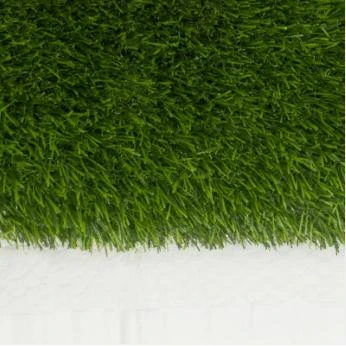
- Afrikaans
- Arabic
- Belarusian
- Bengali
- Czech
- Danish
- Dutch
- English
- Esperanto
- Estonian
- Finnish
- French
- German
- Greek
- Hindi
- Hungarian
- Icelandic
- Indonesian
- irish
- Italian
- Japanese
- kazakh
- Rwandese
- Korean
- Kyrgyz
- Lao
- Latin
- Latvian
- Malay
- Mongolian
- Myanmar
- Norwegian
- Persian
- Polish
- Portuguese
- Romanian
- Russian
- Serbian
- Spanish
- Swedish
- Tagalog
- Tajik
- Thai
- Turkish
- Turkmen
- Ukrainian
- Urdu
- Uighur
- Uzbek
- Vietnamese
artificial turf soccer field cost
Dec . 12, 2024 09:56 Back to list
The Cost of Artificial Turf Soccer Fields A Comprehensive Analysis
Artificial turf soccer fields have gained immense popularity in recent years, offering a solution to various challenges faced by traditional grass fields. The durability, low maintenance, and all-weather playability make artificial turf an attractive option for schools, communities, and sports clubs. However, one of the most important considerations for any organization planning to install an artificial turf soccer field is the cost. This article will delve into the factors that contribute to the expenses associated with artificial turf fields and provide a comprehensive overview of potential costs.
Initial Installation Costs
The first cost to consider is the installation of the artificial turf itself. The price of artificial turf has a wide range depending on quality, type, and manufacturer. On average, the cost of artificial turf can range from $5 to $10 per square foot. For a standard-sized soccer field, which typically measures about 100,000 square feet, the total cost for materials alone can amount to between $500,000 and $1,000,000. This figure includes the turf, padding, and infill material.
Beyond the synthetic grass itself, there are additional costs to factor in during the installation phase. Site preparation can include grading, drainage installation, and possibly the removal of existing grass. This can add another $100,000 or more to the overall cost, depending on the existing conditions of the site. Furthermore, the labor required for installation also contributes to the total expenditure, potentially adding another 15% to 20% of the project cost.
Maintenance Costs
While one of the often-touted benefits of artificial turf is its low maintenance needs compared to natural grass, it doesn't mean it's maintenance-free. Routine maintenance is crucial for keeping an artificial turf field in prime condition. Regular tasks include cleaning debris, using specialized equipment to groom the turf, and checking and replenishing infill material as needed. Typical annual maintenance costs can range from $10,000 to $20,000.
Over time, the surface will wear and may require repairs or even replacement of sections of turf. The lifespan of a synthetic field is generally between 8 to 15 years, and budgeting for eventual replacement is necessary. Many organizations set aside funds annually to prepare for this expense, estimated to be between $300,000 and $500,000 for complete replacement, depending on the size and specifications of the field.
artificial turf soccer field cost

Other Considerations
In addition to direct costs, there are several other factors that organizations should consider when evaluating the total cost of an artificial turf soccer field.
1. Usage Artificial turf fields can accommodate more games and practices compared to natural grass fields, which provides potential additional revenue streams for schools and sports clubs. More frequent use can offset some installation costs over time.
2. Environmental Impact While artificial turf is often touted as being more durable, there are environmental concerns associated with its production and disposal. Organizations should consider the long-term ecological impacts when deciding between artificial turf and natural grass.
3. Health Concerns Some studies have raised questions about the safety of artificial turf, particularly concerning the infill materials used, such as crumb rubber. Organizations may face costs related to securing the field's safety and addressing public concerns.
4. Financing Options Many organizations explore various financing options to mitigate upfront costs, including grants, partnerships, or fundraising campaigns. Proposals for public-private partnerships can significantly reduce the initial financial burden.
Conclusion
Installing an artificial turf soccer field can be a significant financial commitment, with costs ranging from hundreds of thousands to over a million dollars. By considering the initial installation costs, ongoing maintenance expenses, and the potential for increased usage and revenue generation, organizations can make a well-informed decision. Ultimately, the choice between artificial turf and natural grass should align with the specific needs and long-term goals of the community or organization. As technology continues to advance, the future of artificial turf may evolve, potentially leading to more cost-effective and environmentally friendly options for soccer fields worldwide.
-
The Benefits of Artificial Turf for Indoors
NewsJul.15,2025
-
How Artificial Grass Suppliers Ensure Quality Products
NewsJul.15,2025
-
Artificial Grass and Pets: A Space for Relaxation
NewsJul.08,2025
-
Balcony & Outdoor Decoration with Artificial Grass
NewsJul.08,2025
-
Best Indoor Artificial Grass for Home
NewsJul.07,2025
-
Best Pet Turf for Dogs: Safe & Durable Artificial Grass Options
NewsJul.07,2025
Products categories









